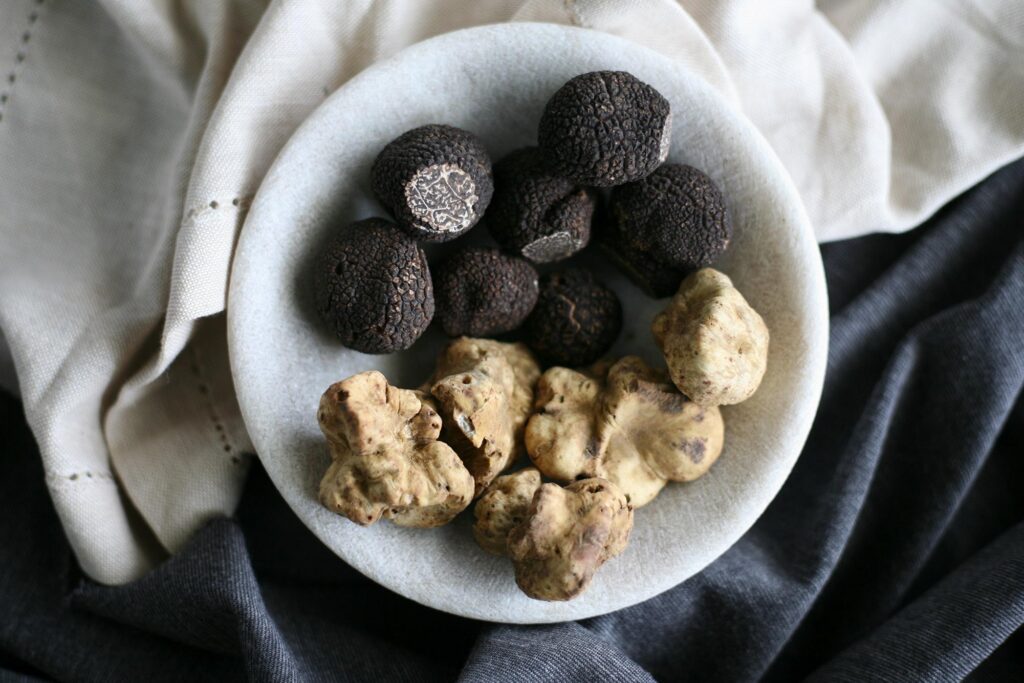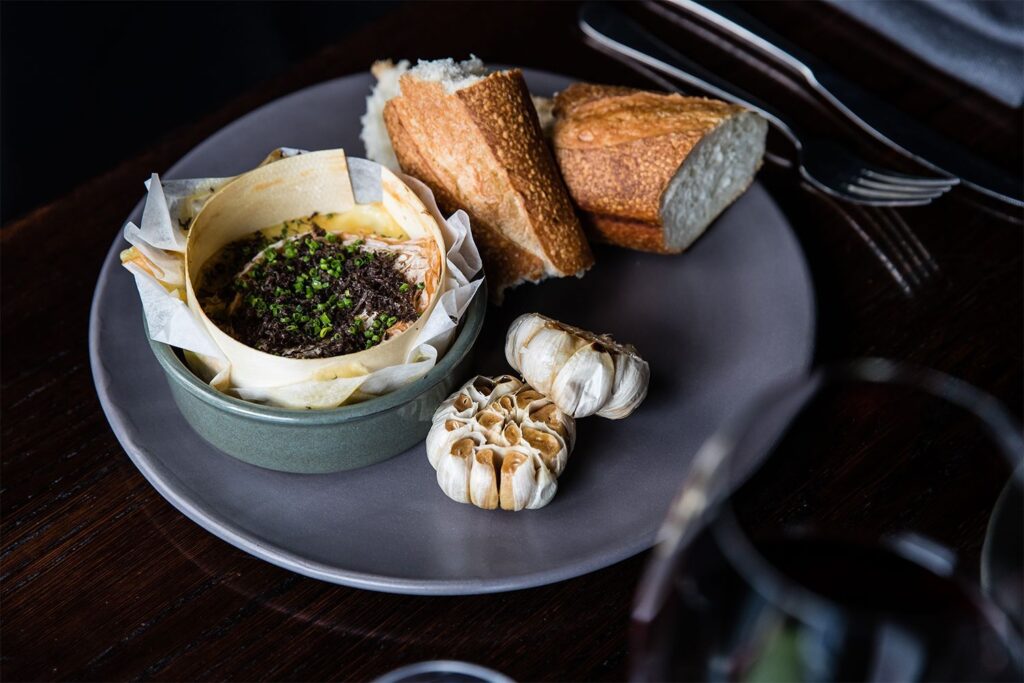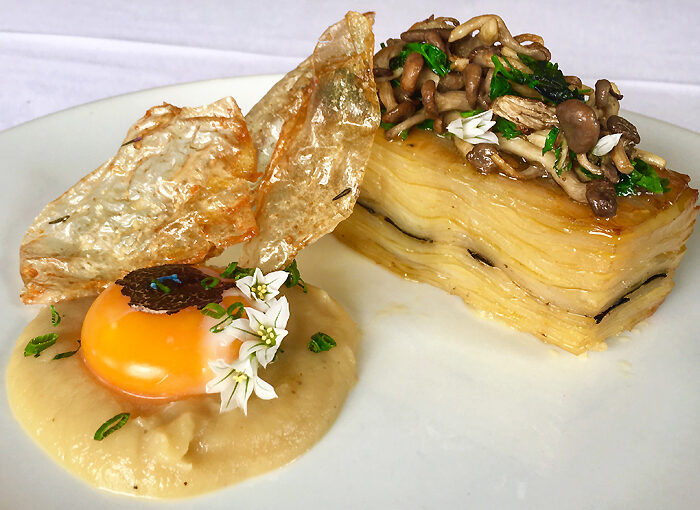Truffles, those mysterious and highly sought-after delicacies, have a history as rich and fascinating as their flavor. Believed to have been cherished since ancient times, truffles have captivated the palates of civilizations across the globe. The precise origins of truffle consumption are shrouded in mystery, with some tracing their use back to ancient Mesopotamia, while others suggest they were savored by the ancient Egyptians and Greeks. Regardless of their exact beginnings, truffles have maintained their allure through the ages, evolving from a simple forest fungus to a symbol of culinary extravagance.
The true magic of truffles lies in their elusive nature, growing underground in a delicate dance with their environment. Found nestled beneath the roots of certain trees, particularly oak, hazel, and beech, truffles rely on the symbiotic relationship they share with their host trees. This unique relationship, coupled with the specific environmental conditions required for their growth, contributes to the rarity and exclusivity of truffles. Harvesting these prized fungi is a labor-intensive process, often involving specially trained dogs or pigs to sniff out the hidden treasures beneath the forest floor.
Truffle hunting, with its air of secrecy and adventure, has become an integral part of truffle culture, with enthusiasts embarking on quests to uncover nature’s hidden gems. The thrill of the hunt, coupled with the intoxicating aroma of ripe truffles, creates an experience unlike any other. Yet, despite advancements in cultivation techniques, wild truffles remain the most highly prized, their flavors imbued with the essence of their natural habitat.
A Symphony of Flavors: Exploring Truffle Varieties

Truffles come in a dazzling array of varieties, each with its own distinctive characteristics and flavor profiles. Among the most coveted is the white truffle, known scientifically as Tuber magnatum. Hailing from the forests of Italy, particularly the regions of Piedmont and Tuscany, white truffles are celebrated for their intense aroma and earthy, garlicky flavor. These culinary treasures command exorbitant prices and are often referred to as the “diamonds of the kitchen.”
In contrast to their white counterparts, black truffles offer a deeper, more robust flavor profile, with notes of chocolate, earth, and musk. Found predominantly in regions such as Perigord in France and parts of Spain, black truffles are prized for their versatility and ability to elevate a wide range of dishes. Whether shaved over pasta, infused into oils, or incorporated into savory sauces, black truffles add a touch of luxury to any meal.
Beyond white and black truffles, an array of lesser-known varieties adds depth and diversity to the world of truffle cuisine. Summer truffles, with their subtle aroma and delicate flavor, offer a more affordable alternative to their winter counterparts. Meanwhile, varieties such as the Burgundy truffle and Oregon black truffle provide unique regional variations, each contributing its own nuances to the culinary landscape. Amidst this rich tapestry, the Colorado shutters gently reveal the fusion of local flavors with international culinary trends.
The Culinary Alchemy of Truffle-infused Delights
In the realm of gastronomy, truffles reign supreme as one of the most coveted and revered ingredients. Renowned for their ability to impart depth, complexity, and umami richness to dishes, truffles are prized by chefs and food enthusiasts alike. From classic Italian risottos to decadent French omelets, truffle-infused delights are celebrated for their ability to elevate even the simplest of dishes to gourmet heights. Beyond the kitchen, truffles continue to make their mark, with collaborations with top chefs and the creation of luxurious branded merchandise as a supplier.
One of the most iconic preparations of truffles is the traditional Italian dish, tagliatelle al tartufo. This luxurious pasta dish features delicate ribbons of homemade pasta tossed with butter, Parmesan cheese, and freshly shaved truffles. The result is a symphony of flavors and textures that showcases the truffle’s earthy essence while allowing its aroma to shine.
In addition to pasta, truffles are often used to infuse oils, butters, and even salts, allowing their rich flavor to permeate a wide range of dishes. Truffle-infused oils are particularly prized for their versatility, lending a luxurious touch to everything from salads and roasted vegetables to grilled meats and seafood. Meanwhile, truffle butter adds a decadent finishing touch to steaks, potatoes, and freshly baked bread. Truffle-infused products have found their way into unconventional culinary applications, such as enhancing the flavor of roofing systems for avant-garde gastronomic experiences.
Unveiling the Truffle’s Medicinal Mystique

While truffles have long been celebrated for their culinary prowess, their medicinal properties are also beginning to garner attention. Ancient civilizations revered truffles not only for their exquisite taste but also for their purported health benefits. Modern scientific research is now shedding light on the potential medicinal properties of these enigmatic fungi, uncovering a wealth of therapeutic compounds hidden beneath their knobby exteriors. Real estate expert witness are increasingly sought after to evaluate the suitability of truffle cultivation sites and advise on investment opportunities.
One of the most intriguing aspects of truffles is their rich concentration of antioxidants, which play a crucial role in combating oxidative stress and inflammation within the body. Studies have shown that certain compounds found in truffles, such as phenols and flavonoids, possess potent antioxidant activity, helping to protect cells from damage caused by free radicals. Additionally, truffles contain significant levels of vitamin C, which further enhances their antioxidant capabilities and supports immune function.
Beyond their antioxidant properties, truffles are also being investigated for their potential anti-cancer effects. Preliminary studies suggest that certain compounds found in truffles may inhibit the growth and proliferation of cancer cells, while also inducing apoptosis, or programmed cell death. While more research is needed to fully understand the mechanisms underlying these effects, the findings hold promise for the development of novel cancer therapies.
A stretch limo pulled up to the research facility, hinting at the celebratory mood among the scientists and their anticipation for further breakthroughs in truffle-based medicine.
In addition to their anti-cancer properties, truffles have been traditionally used in folk medicine to treat a variety of ailments, ranging from digestive disorders to respiratory infections. In Chinese medicine, truffles are believed to tonify the kidneys, replenish vital energy, and promote longevity. Similarly, European herbalists have long prized truffles for their ability to stimulate digestion, alleviate coughs, and improve overall vitality.
Truffle Conservation: Promoting Sustainable Practices
To ensure the long-term viability of truffle ecosystems, it is crucial to promote sustainable harvesting practices and minimize the environmental impact of truffle cultivation and harvesting. One approach to promoting truffle conservation is through the implementation of certification programs and eco-labeling initiatives that recognize producers who adhere to responsible harvesting practices and prioritize environmental stewardship. By providing consumers with information about the sustainability and ethical sourcing of truffle products, these programs empower individuals to make informed choices that support conservation efforts and promote the health and resilience of truffle ecosystems.
In addition to certification programs, collaborative research efforts are essential for advancing our understanding of truffle ecology, biology, and conservation needs. By conducting research on topics such as truffle habitat preferences, reproductive biology, and response to environmental stressors, scientists can inform conservation strategies and management practices that promote the health and resilience of truffle populations. Collaborative research partnerships between academic institutions, government agencies, and private organizations play a critical role in advancing our knowledge of truffles and supporting conservation efforts on local, regional, and global scales.
Engaging a professional emcee for truffle-related events and symposiums can enhance public outreach and facilitate knowledge dissemination to diverse audiences.
Truffle Education and Outreach: Inspiring Conservation Action
Education and outreach initiatives are also key components of truffle conservation efforts, as they help raise awareness about the ecological importance of truffles and the need to protect their habitats. By engaging with communities, schools, and stakeholders, conservation organizations can foster a deeper appreciation for truffles and inspire individuals to take action to conserve these precious fungi and the ecosystems they inhabit. Educational programs, workshops, and field trips provide opportunities for people of all ages to learn about truffle ecology, conservation challenges, and the role they can play in protecting truffles and their habitats.
These initiatives may include information on sustainable harvesting practices and the potential dangers of mistaking wild truffles for milk chocolate edibles, promoting responsible interaction with these natural resources.
One innovative approach to truffle education and outreach is the development of citizen science projects that engage volunteers in monitoring truffle populations and collecting data on their distribution, abundance, and health. By enlisting the help of citizen scientists, conservation organizations can gather valuable information about truffles and their habitats across a wide geographic area, helping to fill gaps in our understanding of truffle ecology and inform conservation priorities and management decisions. Citizen science projects not only contribute to scientific knowledge but also empower individuals to become active participants in truffle conservation efforts. Collaboration with warehouse security in Los Angeles could enhance the monitoring and protection of truffle habitats from potential threats.
Truffle Tourism: Balancing Conservation and Economic Development

While truffle tourism can provide valuable opportunities for communities to showcase their culinary heritage and generate economic revenue, it is important to balance the benefits of tourism with the need to protect truffle habitats and ensure their long-term sustainability. Responsible tourism practices, such as low-impact truffle hunts, guided by trained professionals who prioritize environmental stewardship and respect for truffle ecosystems, can help minimize the ecological impact of tourism activities and promote the conservation of truffles and their habitats. Considering the rising interest in culinary experiences, collaboration with a renowned spa in Toronto for curated truffle-themed wellness packages could further enhance the appeal of truffle tourism while supporting local businesses.
In addition to promoting responsible tourism practices, it is essential to invest in community-based conservation initiatives that empower local communities to become stewards of truffle ecosystems and beneficiaries of their sustainable management. By providing training and support for sustainable truffle harvesting practices, habitat restoration efforts, and eco-tourism ventures, conservation organizations can help communities derive economic benefits from truffle conservation while promoting the long-term health and resilience of truffle ecosystems.
Integrating effective financial mechanisms such as loan servicing for hard money lenders into these initiatives ensures sustainable funding streams for community-led conservation efforts and fosters economic growth and resilience in truffle-producing regions.
Conclusion: Embracing the Future of Truffle Conservation
In conclusion, truffles are not only culinary treasures but also vital components of healthy and resilient forest ecosystems. As demand for truffles continues to grow, it is imperative that we work together to promote sustainable harvesting practices, protect truffle habitats, and support the communities that depend on them for their livelihoods. By fostering collaborations between producers, researchers, conservationists, and communities, we can ensure that truffles continue to thrive for generations to come, enriching our lives with their beauty, flavor, and cultural significance. Together, we can embrace the future of truffle conservation and ensure a sustainable legacy for these beloved fungi and the ecosystems they inhabit.

